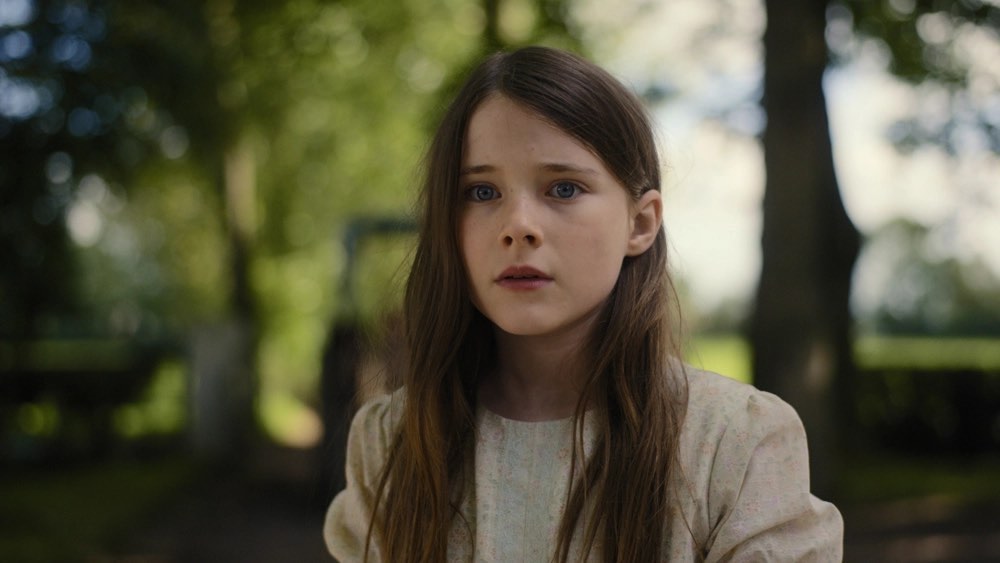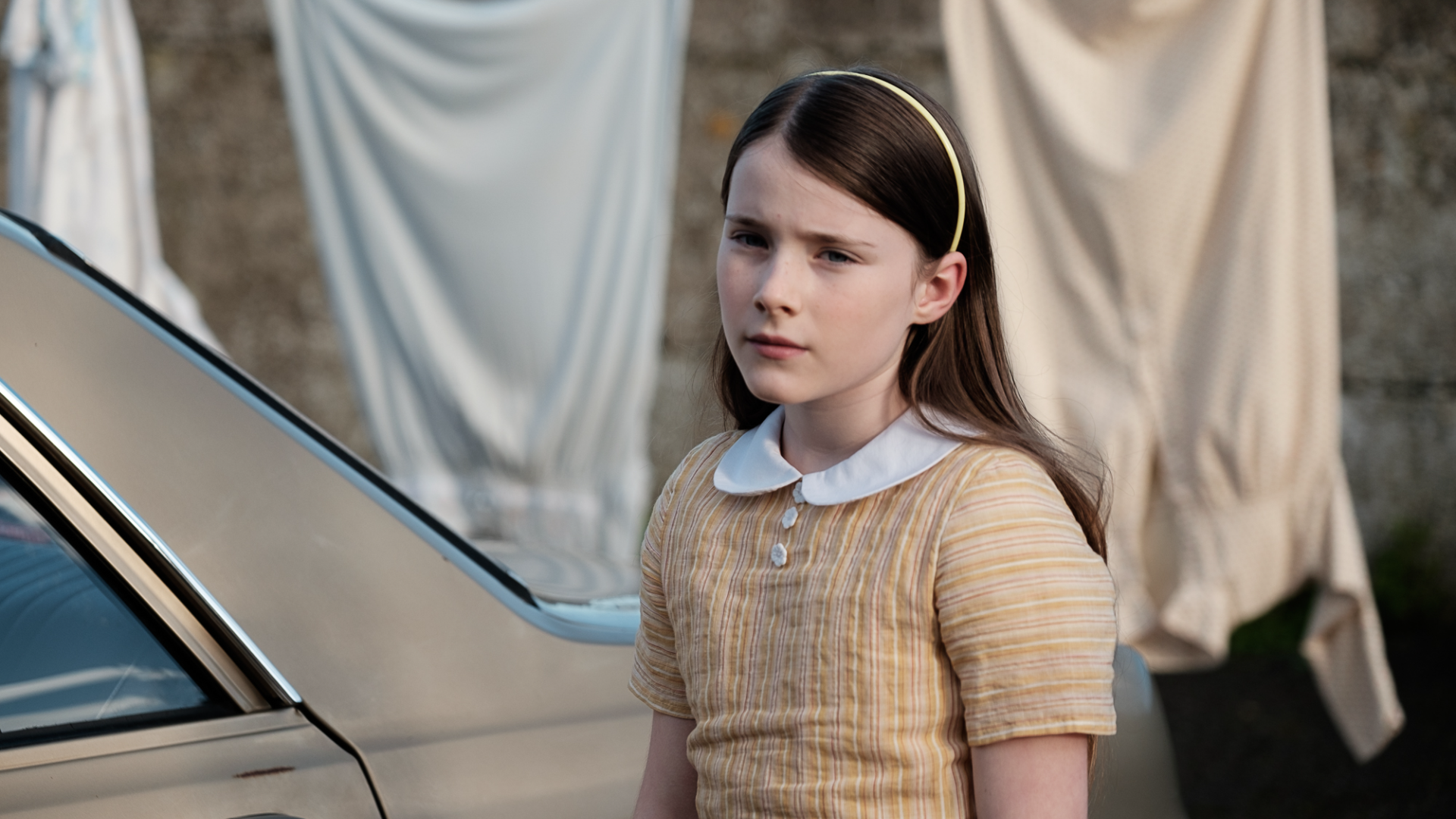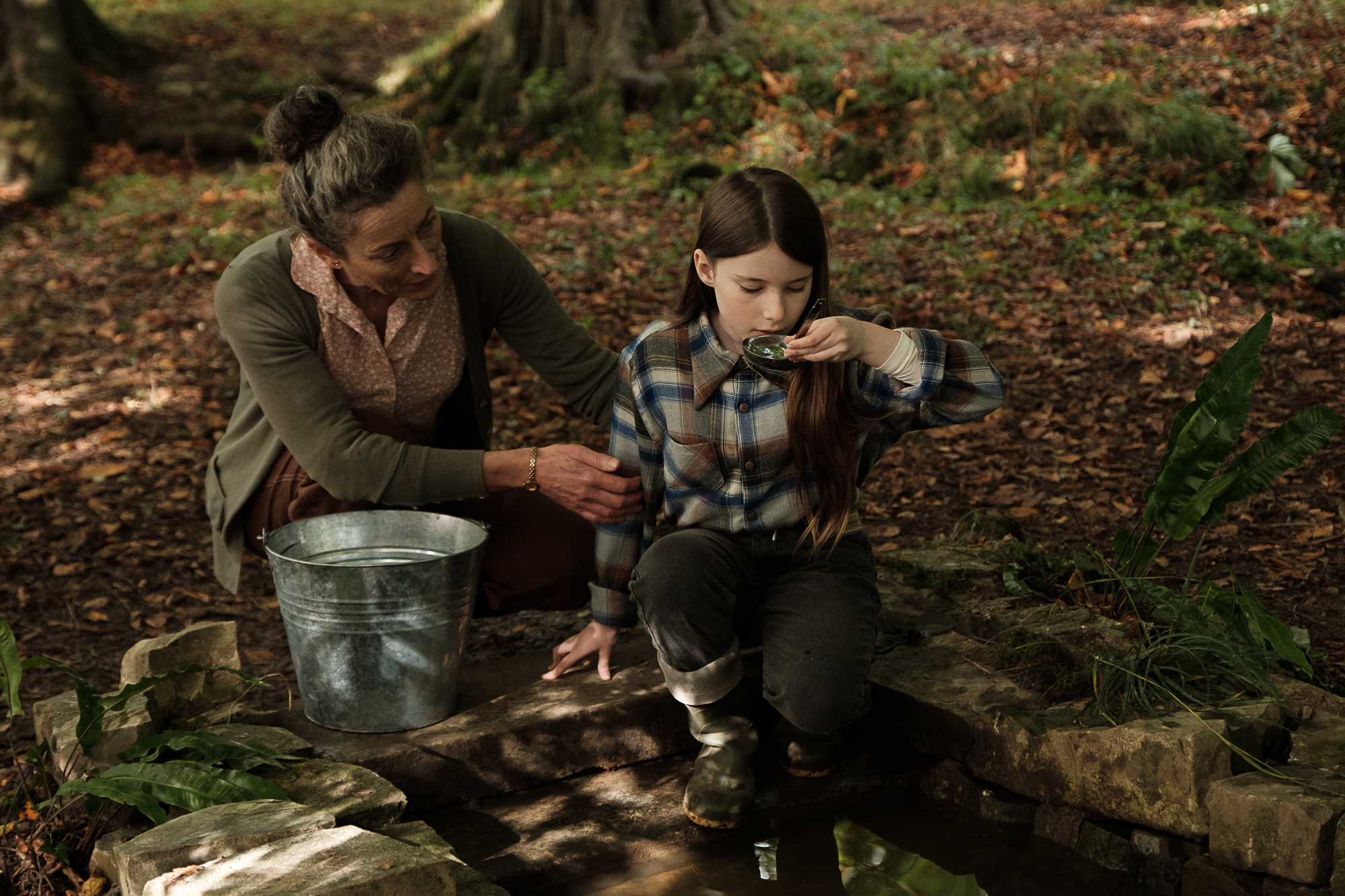
★★★★☆
It’s in the title. The Quiet Girl is a quietly affecting film about a girl of few words. But who needs words when you have visual language like this?
Colm Bairéad’s debut feature The Quiet Girl is a beautiful film. It’s (as expected) quiet and there’s barely any plot, but it has so much to say and express. It’s a film where visuals take the lead and most things are said without words. The act of looking and seeing becomes vital and Bairéad treads the waters carefully.
The film, Bairéad’s feature debut, is based on a novella titled Foster, by Claire Keegan and is largely in Gaelige. (We included the film in our May Indie Cinema Guide for a very good reason).
Set in rural Ireland in 1981, Cáit (Catherine Clinch) is the titular quiet girl. Her family is big and growing, with her mother pregnant again and her dad, an alcoholic with a gambling issue and mistresses, is distant. Cáit wets the bed at night and has never felt the kind of love that makes a child blossom.

That is until she is sent away for the summer to live with two relatives, Eibhlín (Carrie Crowley) and Seán (Andrew Bennett). At their small, cozy farm, Cáit is finally allowed to be a child and she is loved and cared for. Eibhlín bathes her, brushes her hair and teaches her how to make jam. Seán, at first a little begrudgingly, takes her along to do a day’s work on the farm and times her running to the post box and back.
The Quiet Girl is composed almost entirely of these small moments that have a huge impact on Cáit. She is ashamed of her bed-wetting after the first night and prepares herself for being told off, or perhaps worse, but instead Eibhlín apologises to Cáit for making her sleep on an old mattress that seems to weep at night.
There isn’t tension in the narrative, but there is tension in the character dynamics. Eibhlín and Seán clearly have some demons in their past, a detail Cáit picks up on as she is dressed in shirts and trousers and the walls of her bedroom are clad in a train wallpaper. It’s not hard to figure out what happened, but Bairéad never treats it as a twist, but more as a slow, devastating reveal, something too painful to share until one is forced to.
Shot in the boxy Academy aspect ratio, The Quiet Girl’s cinematography is stunning. Kate McCullough creates a rich visual language for the film; we’re often peeping through doors or windows, watching and observing rather than actively participating. The wandering camera undoubtedly romanticises 1980s Ireland, but it never makes that mistake with Cáit’s home life.

The performances are also exemplary, especially that of the young lead. While Carrie Crowley’s role is challenging and probably the most emotional, it’s Andrew Bennett as Seán who shines the brightest. He fills Seán with regret and uncertainty, perhaps even guilt and it’s all evident in the way he refuses to meet Cáit’s eye or how his physical stance reflects his awkwardness.
It’s not a perfect film, but it comes close. The biggest misstep is perhaps the characterisation of the nosy neighbour, which seems so pointed and unnecessary in a film that’s otherwise so subtle and calm. But for the most part, The Quiet Girl is a moving film and the equivalent of a warm hug.


